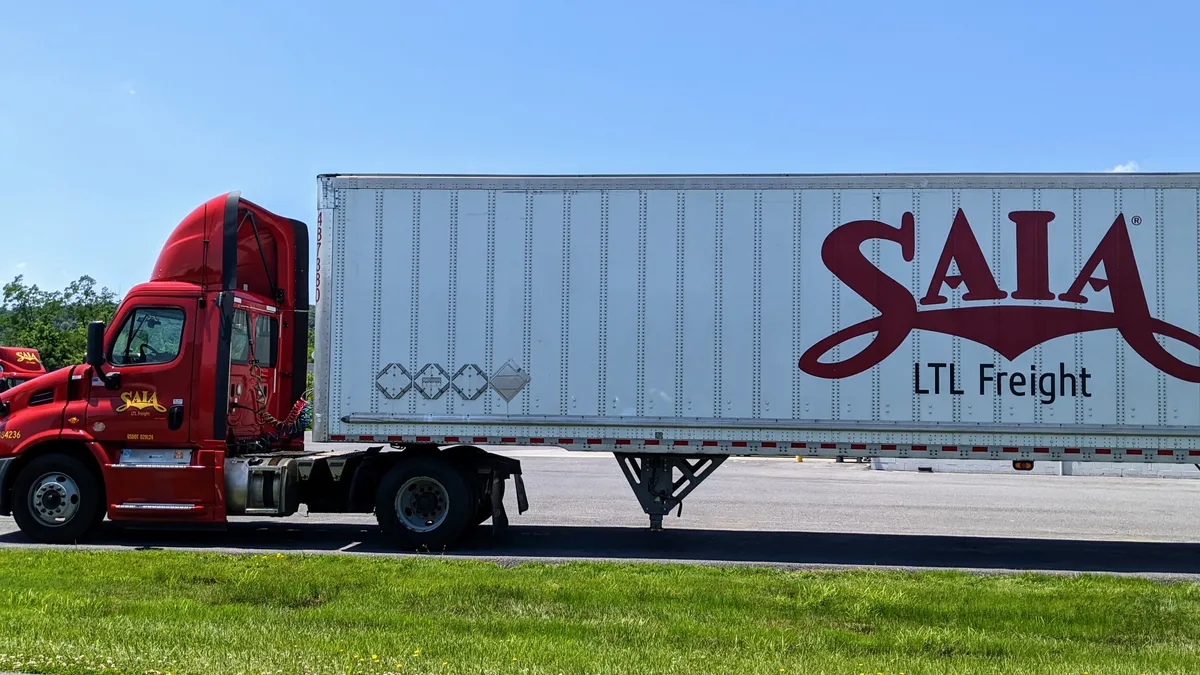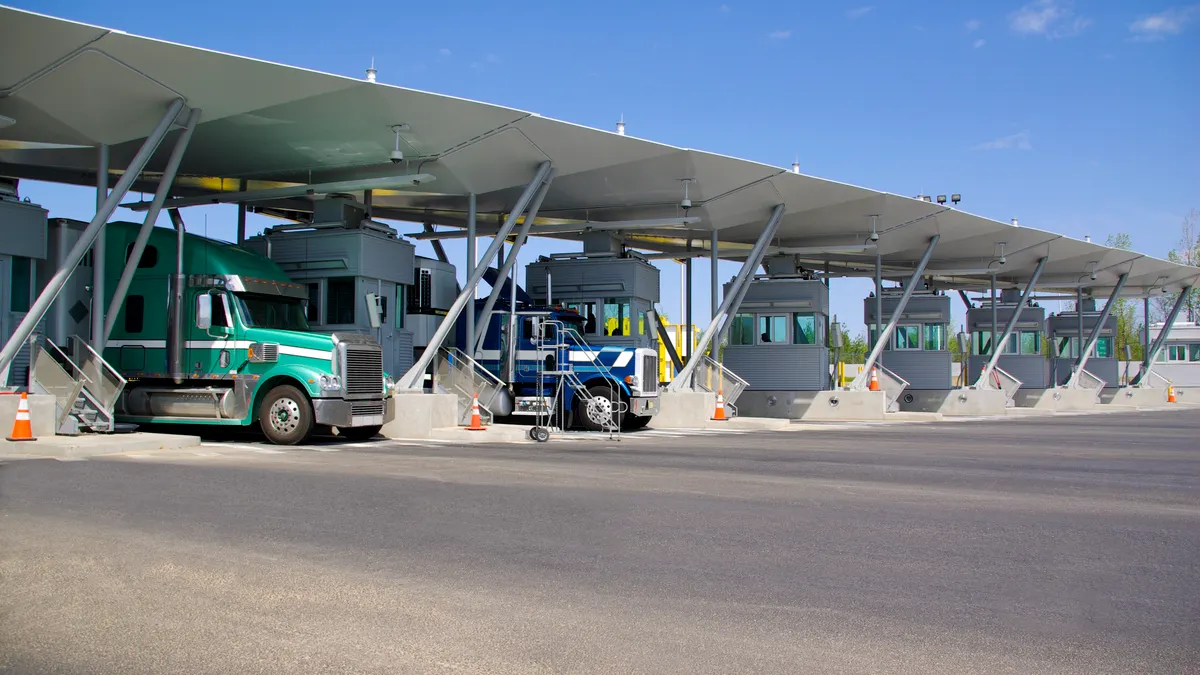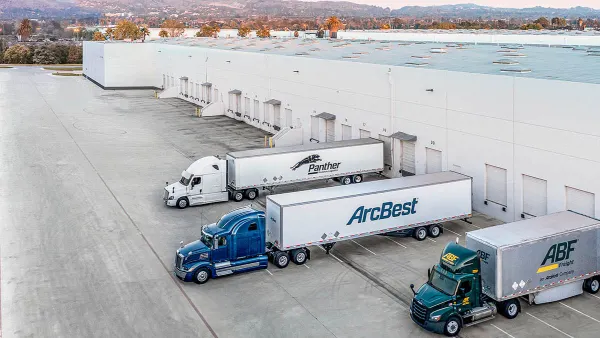Dive Brief:
- The driver shortage once again ranked as the No. 1 concern of the industry, as reported by the American Transportation Research Institute on Friday. It was the fourth consecutive year the shortage topped the list.
- The institute reported that the FMCSA Drug and Alcohol Clearinghouse has increased the shortage problem as substance violations have forced offending drivers out of the industry.
- COVID-19 also persuaded many older drivers to retire or switch industries, ATRI reported.
Dive Insight:
The driver shortage continues to sit atop the ATRI list of industry concerns, and the institute advocated in its latest report a number of solutions to alleviate the problem.
One of ATRI's solutions includes training safe drivers aged 18 to 20 to haul interstate loads. The FMCSA is considering a change in federal policy allowing drivers of those ages to be allowed to cross state lines.
ATRI urged the industry and state governments to "quantify impact" of state licensing departments slowed by COVID-19. The trucking industry has sounded alarm bells about the slowdown in issuing commercial learner's permits and CDLs.
ATRI also recommended that fleets recruit more women and minorities.
The driver shortage consistently ranks as a top issue
| 2015 | 2016 | 2017 | 2018 | 2019 | 2020 | |
|---|---|---|---|---|---|---|
| 1 | HOS | ELD mandate | Driver shortage | Driver shortage | Driver shortage | Driver shortage |
| 2 | Compliance and safety | HOS | ELD mandate | HOS | HOS | Driver compensation |
| 3 | Driver shortage | Regulations | HOS | Driver retention | Driver compensation | Truck parking |
| 4 | Driver retention | Truck parking | Truck parking | ELD mandate | Detention/delays | Compliance and safety |
| 5 | Truck parking | Economy | Driver retention | Truck parking | Truck parking | Insurance cost/availability |
Source: The American Transportation Research Institute
The pandemic eased the driver shortage for a short time in the spring, but as consumer spending and e-commerce grew over the summer, analysts said the driver shortage contributed to fleets' capacity issue.
Trucking executives, investors and analysts mentioned the issue on multiple calls this earnings cycle. On Oct. 16, J.B. Hunt said significant Q3 costs came from capacity tightness caused by labor issues. Demand for new drivers, for replacement and growth needs, is "abnormally" high, said John Roberts, J.B. Hunt CEO and president.
Another reason for the shortage and for turnover popped up in WorkHound's Q3 survey of thousands of drivers. Max Farrell, CEO of WorkHound, found turnover spiked in Q3. In the survey of anonymous feedback, discussed during a Thursday webinar, the number of longtime drivers with good records choosing to stay home with family was high enough to concern Nick Wakefield, USA Truck vice president of human resources. Wakefield said he fears the industry is not meeting the personal needs of drivers with time off, and that is leading to burnout and departures.
Some of that longing to be home is related to the coronavirus, Farrell said. Drivers often voiced concern over what would happen if they need time off in case of a family death. Wakefield said he has spoken to industry recruiters who said they are working to reform the time-off structure to try and respond to driver requests.
Retirements will also likely bedevil the industry for a while. The average age of the WorkHound driver giving feedback was 55, something that transport industry officials have fretted about before. Trucking is older than most industries, according to a 2019 driver shortage report by ATA.









